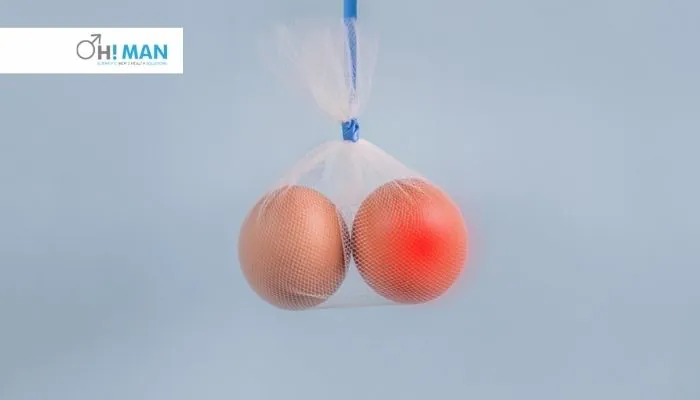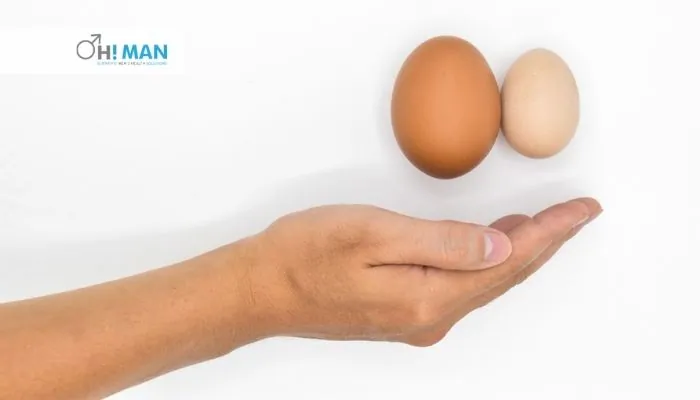Cryptorchidism(undescended Testicle) Complication & Treatment
Cryptorchidism(undescended Testicle) Complication & Treatment

An undescended testicle (cryptorchidism) is a testicle that doesn’t descend to the correct place in the skin bag beneath the penis (scrotum) before birth. Most often, only one testicle is affected, and however, about 10% of the time, both testicles are affected.
A undescended testicle is rare, but it is common among prematurely born baby boys.
According to Stanford medicines About 3 to 4 of 100 newborns have this issue, and up to 21 of 100 premature newborns. In most instances, the testicles will descend to the accurate position by themselves after months. However, testicles will not stop growing after three months. Therefore, treatment will be essential for about one or two out of 100 boys who have undescended testicles. Surgery is advisable and possible to correct an undescended testicle in your son’s body.
A child’s reflex temporarily pulls his testicles up when he is scared or cold after six months. These testicles can be found in the scrotum and do not require treatment, and only undescended testicles need treatment.
However, a physical exam can help a pediatric urologist tell the difference.
Table of Contents
Cryptorchidism Complications In Male
To make sperm, the testicles must be at least 2 to 3 degrees below normal body temperatures. Moreover, the ideal location for a testicle is in the scrotum, which is many degrees lower than the body’s temperature.
Also, the normal functioning of testicles will not be possible if they don’t fall into the scrotum. Further, the lower the chances that the sperm will mature normally, the longer the testicles remain too warm. Moreover, this can lead to male infertility issues like Hypogonadism if both testicles are affected.
Understanding The Difference Between Normal & Undescended Testicles
Normal testicles develop early in the growth of a baby boy, and they develop in the lower abdomen (abdomen) and then “drop” into the scrotum at the end of pregnancy. Further, the normal testicles attach to stretchable tissue at the bottom of their scrotum, and normal hormones control this.
However, in the case of cryptorchidism, the testicles don’t drop into the scrotum.
Undescended Testicles Symptoms
Undescended testicles symptoms are when you don’t feel or see a testicle in its normal location.
While fetal growth, testicles develop in the womb. The testicles slowly descend from the abdomen during normal fetal development, and they do so through an inguinal canal-shaped passageway leading into the scrotum in the groin. However, this process halts or delays if the testicle don’t descended.

Cryptorchidism Causes
It is unclear why testicles don’t drop in most children with this condition. This could be because the testicles don’t function normally. Sometimes, it’s because of a mechanical problem. The testicles fall but miss the scrotum and right next to it. These are “ectopic testicles.”
It could also be possible that the baby’s hormones cannot stimulate the testicles as normal. Studies reveal that the problem isn’t due to something the mother ate or did during pregnancy.
Sometimes, the testicles may fall but do not unite to the scrotum. When the boy grows up, it becomes obvious that the testicles aren’t united. One in five cases of undescended testicles is there after the boy grows. So, all newborn boys must check their testicles location during the annual checkup.
The following aspects could advance the threat of cryptorchidism:
- Premature birth
- Low birth weight can increase the risk by up to three times.
- Down’s syndrome and other conditions that slow the growth of fetal tissue
- A family history of problems with genital development
- A mother’s smoking habits during pregnancy
Complications
If the testicle doesn’t descend, it can heat up enough to cause low sperm count and poor quality.
Undescended testicular cancer can also occur, but less than 1% of the risk. However, there seems no clear association amongst them.
Testicular torsion is also a possibility with cryptorchidism. When the spermatic cord becomes twisted, the condition arises.
The spermatic cord includes blood vessels, nerves, and tubes carrying the semen between each penis and testicle. If a person doesn’t receive treatment quickly, they could lose their twisted testicle.
Diagnosis
A nonpalpable testicle is when the doctor fails to locate it during a physical exam. Nonpalpable testicles are in the abdomen (undescended), not present, or exceptionally small (“atrophic”). It is vital to identify if any testicles have not fallen.
Moreover, a tumor could develop later in life if a testicle remains inside the abdomen. This type of tumor may go detected until it expands in size or provokes manifestation. There is no way to determine if a testicle exists, and only surgery can confirm this.
Pediatric urologists can perform both laparoscopic and open surgery. So, laparoscopy involves using thin tubes inserted into the child’s body via a small cut. The specialist will utilize an unique camera to see the child’s body from within. The surgeon will identify any of such situations:
- Blind-ending testicular blood vessels – proving there is no testicle
- The abdomen is empty of vessels, proving that there is no testicle.
- The presence of the testicle(s) in the abdomen. However, it will either be surgically removed or descended depending on the condition.
Cryptorchidism Treatment

After three months, the testicle will not drop, and surgery is your only option. After six months, surgery is advisable. Moreover, timing is crucial when the child can handle anesthesia and surgical procedure.
The surgical process is orchiopexy. This surgery is performed under general anesthesia, and the child can usually go home that day. Moreover, most children return to normal in a matter of days. The groin is cut at about 1 inch, and it can often be seen very quickly.
Removing all tissues surrounding them is essential to allow the testicles to move easily into the scrotum. It is then stitched in place. Moreover, in a hernia, the doctor can simultaneously fix it. Sometimes, the testicle may be too large for this type of surgery.
It may be necessary to perform more complicated procedures (sometimes even two) in these cases. The overall success rate for surgery is 98 percent.
Hormone treatment
The human chorionic gonadotropin (HCG) injection is a hormone for cryptorchidism treatment. The hormone may cause your son’s testicle to move towards his scrotum, and it is not advisable because hormone treatment is less effective than surgery for cryptorchidism.
Other treatments
You might think about saline testicular prostheses to the scrotum if your son does not have one or both of his testicles. These prostheses implantation is during late childhood and adolescence, and these prostheses give your scrotum a normal appearance.
Your child’s doctor may refer your son to an endocrinologist (hormone specialist) if he doesn’t have at most one healthy testicle. You can discuss any future hormone treatments necessary to achieve puberty or physical maturity.
Bottom Line
The testicle can often grow to normal size in its scrotum after cryptorchidism treatment. Sometimes, the testicle is not normal and doesn’t grow the right way. Sometimes, the sperm does not grow, even though testicles are larger than normal. Most cases of undescended testicle treatment result in fertility returning to normal.
The chances of fathering a child are good. You should perform routine physical examinations on the child as a teenager and monthly self-exams of the testicle. Routine physicals will check for indications of testicular malignant growth, which is as yet a chance.
However, in case you are still unsure about your situation or wish to have a second opinion about your child’s condition, the Ohman specialists are here to offer you quick and reliable online consultation. The specialists will offer the best treatment for your this condition.
Moreover, if you are experiencing any sexual concerns, then the doctors can address them and offer quality treatment. So, quickly book a consultation by visiting the official site.
Frequently Asked Questions
What is cryptorchidism, and why is it a problem?
Cryptorchidism is when the testicles fail to descend in their actual position in the kid’s scrotum. The condition can cause male fertility problems and an increased risk of testicular cancer.
What is the possible treatment of cryptorchidism?
Usually, after diagnosing the child and understanding the current condition of cryptorchidism, the doctor will suggest the treatment. Surgery is mostly the only possible treatment as other cryptorchidism treatments remain ineffective.
Can people with cryptorchidism have children?
Usually, after diagnosing the child and understanding the current condition of cryptorchidism, the doctor will suggest the treatment. Surgery is mostly the only possible treatment as other cryptorchidism treatments remain ineffective.
Is cryptorchidism cancer?
No. However, the condition is a risk aspect for testicular cancer.



